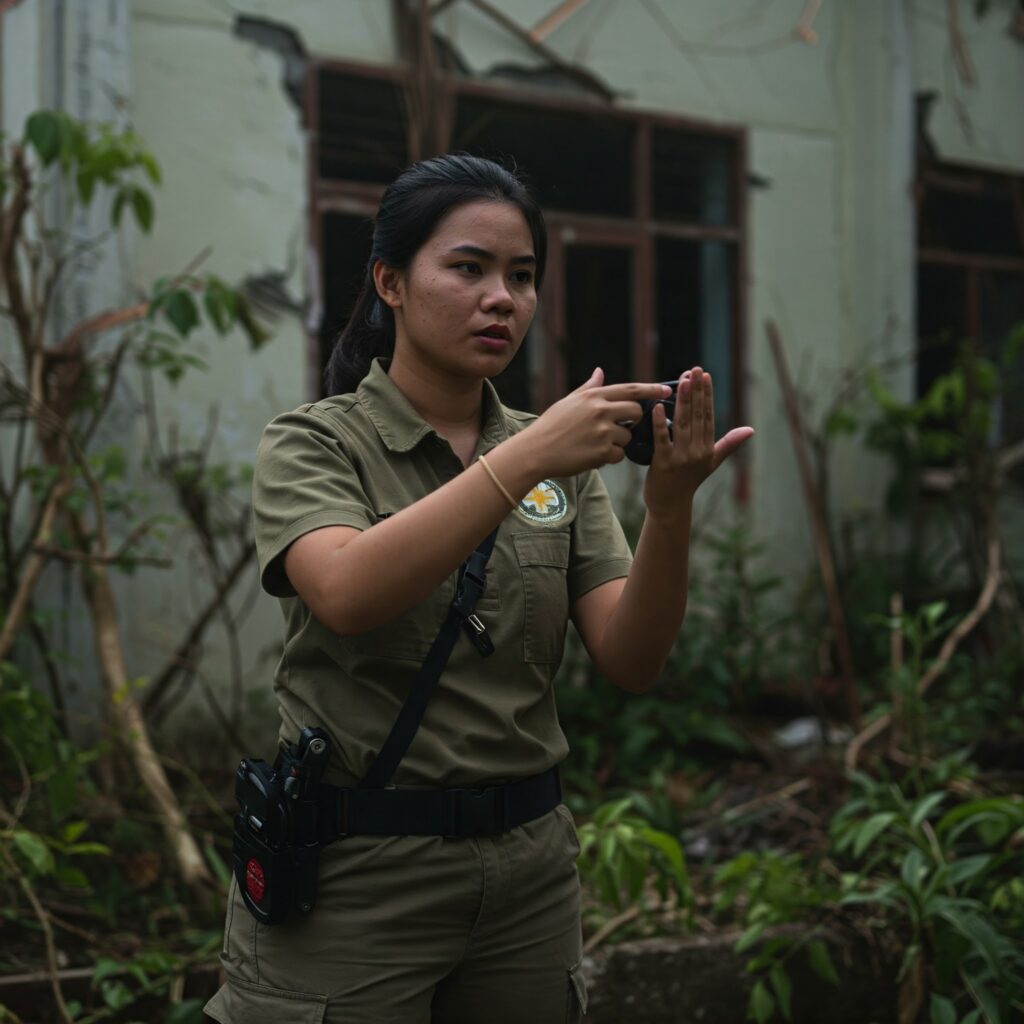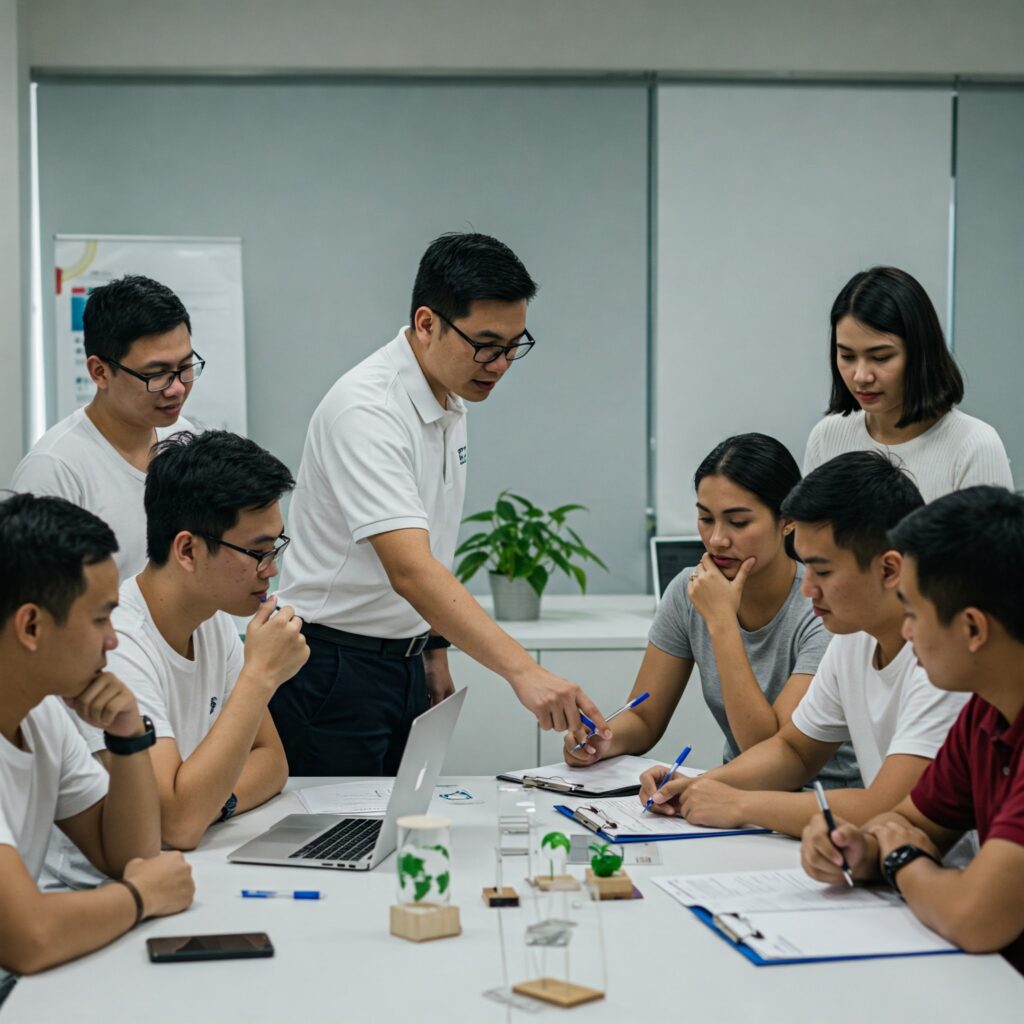The Philippines is a beautiful archipelago, boasting stunning beaches, lush rice terraces, and vibrant cities. But beneath this idyllic exterior lies a precarious reality: the country sits smack-dab in the Pacific Ring of Fire, making it a prime target for natural disasters. Typhoons, earthquakes, volcanic eruptions – you name it, the Philippines has probably experienced it (and then some!).
But Filipinos are a resilient bunch. They’ve learned to live with the ever-present threat of disaster, and they’ve developed a robust system for dealing with it: the National Disaster Risk Reduction and Management Council (NDRRMC).
What is the NDRRMC?
The NDRRMC is the Philippines’ main disaster management agency. Think of it as the superhero team that swoops in to save the day when disaster strikes. But unlike your typical superhero team, the NDRRMC isn’t just about fighting fires and rescuing people from rubble (though they do that too!). They’re also about preventing disasters from happening in the first place.
The NDRRMC is made up of various government agencies, non-government organizations, and civil society groups. They work together to develop and implement disaster risk reduction and management programs.
What Does the NDRRMC Do?
The NDRRMC has a wide range of responsibilities, but they can be broadly grouped into three categories:
- Disaster Risk Reduction
- Emergency Response
- Community Preparedness
Let’s take a closer look at each of these areas.
Disaster Risk Reduction Programs
The NDRRMC works to reduce the risk of disasters by implementing various programs, such as:
- Hazard mapping: Identifying areas that are at risk of different types of disasters.
- Land use planning: Ensuring that development takes place in safe areas.
- Structural mitigation: Building infrastructure that can withstand disasters.
- Non-structural mitigation: Implementing policies and programs that reduce the impact of disasters.
These programs are designed to make the Philippines more resilient to disasters. By identifying risks and taking steps to mitigate them, the NDRRMC helps to protect lives and property.
Emergency Response
When disaster strikes, the NDRRMC is responsible for coordinating the emergency response. This includes:
- Search and rescue: Locating and rescuing people who are trapped or injured.
- Relief distribution: Providing food, water, shelter, and other essential items to disaster victims.
- Medical assistance: Providing medical care to those who need it.
- Damage assessment: Assessing the extent of the damage caused by the disaster.
The NDRRMC has a network of regional and local offices that are responsible for coordinating the emergency response in their respective areas. They also work closely with other government agencies, non-government organizations, and international partners to ensure that disaster victims receive the assistance they need.
Community Preparedness
The NDRRMC also works to prepare communities for disasters. This includes:
- Information and education campaigns: Raising awareness of disaster risks and how to prepare for them.
- Community-based disaster preparedness planning: Helping communities to develop their own disaster preparedness plans.
- Early warning systems: Providing communities with timely warnings of impending disasters.
- Capacity building: Training communities in disaster preparedness and response.
By preparing communities for disasters, the NDRRMC helps to reduce the impact of these events. When communities are prepared, they are better able to protect themselves and recover from disasters.
The NDRRMC’s Structure
The NDRRMC is a complex organization with a hierarchical structure. At the top is the National Council, which is chaired by the Secretary of National Defense. The National Council is responsible for setting policy and providing overall direction for the NDRRMC.
Below the National Council are the Regional Councils, which are responsible for coordinating disaster risk reduction and management activities in their respective regions. The Regional Councils are chaired by the Regional Directors of the Office of Civil Defense.
At the local level, there are the Local Disaster Risk Reduction and Management Councils (LDRRMCs). The LDRRMCs are responsible for coordinating disaster risk reduction and management activities in their respective cities and municipalities. The LDRRMCs are chaired by the mayors.
The NDRRMC’s Successes
The NDRRMC has a long track record of success in disaster risk reduction and management. The agency has been instrumental in reducing the impact of disasters in the Philippines. Some of the NDRRMC’s notable successes include:
- The development of a comprehensive disaster risk reduction and management framework.
- The establishment of a nationwide early warning system.
- The implementation of community-based disaster preparedness programs.
- The provision of timely and effective assistance to disaster victims.
These successes have helped to save lives and protect property in the Philippines.
The NDRRMC’s Challenges
Despite its successes, the NDRRMC also faces a number of challenges. These challenges include:
- The increasing frequency and intensity of natural disasters.
- The limited resources of the NDRRMC.
- The need to improve coordination among different government agencies and non-government organizations.
- The challenge of reaching remote and vulnerable communities.
The NDRRMC is working to address these challenges. The agency is constantly improving its programs and strategies to ensure that it can effectively respond to the changing needs of the Philippines.
How You Can Help
There are a number of things you can do to help the NDRRMC in its work. You can:
- Volunteer your time and skills.
- Donate money or goods.
- Educate yourself and others about disaster preparedness.
- Support the NDRRMC’s programs and initiatives.
By working together, we can all help to make the Philippines a safer and more resilient country.
Conclusion
The NDRRMC is a vital organization that plays a critical role in protecting the Philippines from disasters. The agency’s work is essential to saving lives and protecting property. By supporting the NDRRMC, we can all help to make the Philippines a safer and more resilient country.
Disclaimer: The information provided in this blog is intended for general knowledge and informational purposes only, and does not constitute professional advice. While we strive for accuracy, we cannot guarantee that the information is up-to-date or error-free. If you find any inaccuracies, please report them so we can correct them promptly.




